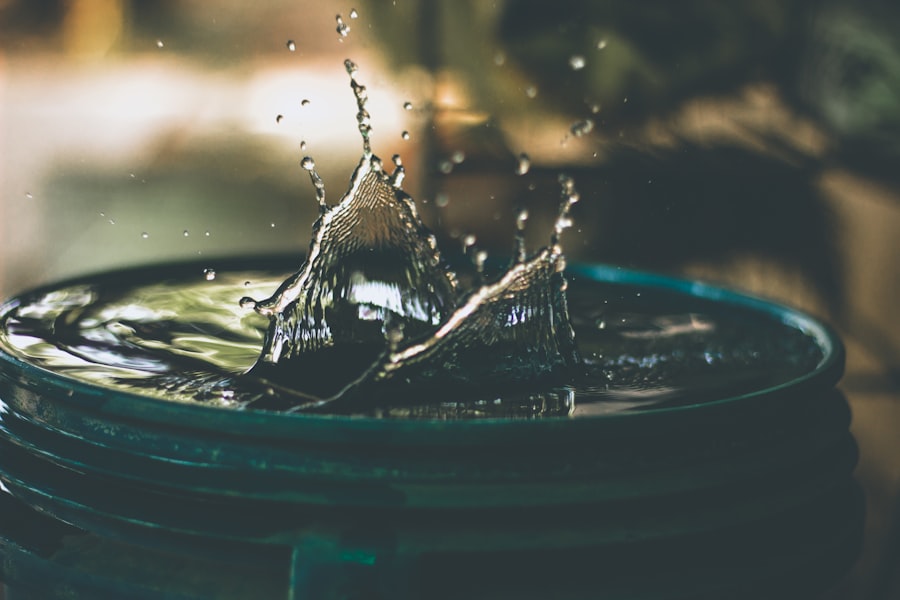Low water pressure can be a frustrating issue for homeowners, often leading to inconveniences in daily activities such as showering, washing dishes, or doing laundry. To effectively address this problem, it is essential to first understand the various factors that can contribute to low water pressure. One common cause is the age and condition of the plumbing system.
Over time, pipes can corrode, leading to reduced water flow. This corrosion can create blockages that impede the movement of water, resulting in a noticeable drop in pressure. Additionally, older homes may have plumbing systems that were not designed to accommodate modern water usage demands, further exacerbating the issue.
Another significant factor that can lead to low water pressure is the municipal water supply. In some areas, especially during peak usage times, the water supply may not be sufficient to meet the demands of all residents. This can result in lower pressure at individual homes.
Furthermore, issues such as construction work or maintenance on local water lines can temporarily affect water pressure. Understanding these potential causes is crucial for homeowners seeking to diagnose and remedy low water pressure issues effectively.
Key Takeaways
- Low water pressure can be caused by various factors such as clogs, leaks, and issues with the water pressure regulator.
- Check for leaks in the plumbing system by inspecting visible pipes and fixtures for any signs of water leakage.
- Inspect and clean faucet aerators by removing them and soaking them in vinegar to remove any mineral deposits that may be affecting water flow.
- Examine the water pressure regulator to ensure it is functioning properly and adjust it if necessary to improve water pressure.
- Flushing the water heater can help remove sediment and mineral buildup that may be affecting water pressure and overall performance.
Checking for Leaks in the Plumbing System
One of the first steps in addressing low water pressure is to check for leaks within the plumbing system. Leaks can occur in various places, including pipes, faucets, and fixtures, and they can significantly impact water pressure. When there is a leak, water escapes from the system before it reaches its intended destination, leading to reduced pressure at taps and appliances.
Homeowners should conduct a thorough inspection of visible pipes for any signs of moisture or water damage. This includes checking under sinks, around toilets, and in basements or crawl spaces where pipes may be exposed. In addition to visible leaks, homeowners should also be aware of hidden leaks that may not be immediately apparent.
These can occur within walls or underground, making them more challenging to detect. A sudden increase in the water bill can be a telltale sign of a hidden leak. Homeowners may also consider using a water meter to monitor usage; if the meter continues to run when no water is being used, it could indicate a leak somewhere in the system.
Addressing leaks promptly is essential not only for restoring water pressure but also for preventing further damage and costly repairs.
Inspecting and Cleaning the Faucet Aerators

Faucet aerators are small devices attached to the end of faucets that help regulate water flow and conserve water by mixing air with the stream. Over time, these aerators can become clogged with mineral deposits, debris, or sediment, which can lead to reduced water pressure at the faucet. Homeowners experiencing low pressure should consider inspecting and cleaning their faucet aerators as part of their troubleshooting process.
This is a relatively simple task that can yield significant improvements in water flow. To clean an aerator, homeowners should first remove it from the faucet by unscrewing it carefully. Once removed, they can soak it in a solution of vinegar and water to dissolve any mineral buildup.
A soft brush can also be used to scrub away stubborn deposits. After cleaning, rinsing the aerator thoroughly before reattaching it is essential to ensure that no debris remains that could obstruct water flow. By maintaining clean aerators, homeowners can often restore optimal water pressure and improve overall faucet performance.
Examining the Water Pressure Regulator
| Metrics | Data |
|---|---|
| Water Pressure Before Regulation | 80 psi |
| Water Pressure After Regulation | 50 psi |
| Regulator Efficiency | 37.5% |
| Regulator Maintenance Date | June 15, 2021 |
The water pressure regulator is a crucial component of a home’s plumbing system that helps maintain consistent water pressure throughout the house. If this device malfunctions or becomes damaged, it can lead to fluctuations in water pressure or a significant drop in flow rate. Homeowners should familiarize themselves with their regulator’s location and functionality as part of their efforts to diagnose low water pressure issues.
Typically found near the main water supply line, the regulator can be adjusted or replaced if necessary. To examine the regulator, homeowners should first check for any visible signs of wear or damage. If the regulator appears corroded or has leaks, it may need replacement.
Additionally, homeowners can test the pressure settings using a pressure gauge attached to an outdoor spigot or hose bib. If the readings are significantly lower than expected, adjusting the regulator may help restore proper pressure levels. However, if adjustments do not yield results or if there are concerns about the regulator’s condition, consulting a professional plumber may be advisable.
Flushing the Water Heater
A neglected water heater can also contribute to low water pressure issues within a home. Over time, sediment and mineral buildup can accumulate at the bottom of the tank, reducing its efficiency and affecting water flow. Flushing the water heater regularly is an essential maintenance task that helps prevent these problems and ensures optimal performance.
Homeowners should consider flushing their water heater at least once a year or more frequently if they live in an area with hard water. To flush a water heater, homeowners should first turn off the power supply or gas to the unit and allow it to cool down. Next, they should connect a garden hose to the drain valve at the bottom of the tank and direct it to a suitable drainage area.
Opening the drain valve will allow sediment and debris to exit the tank along with the water. Once the tank has been flushed completely, homeowners should close the valve, remove the hose, and refill the tank before restoring power or gas. Regular flushing not only helps maintain proper water pressure but also extends the lifespan of the water heater.
Clearing Clogs in the Pipes

Clogs within the plumbing system are another common cause of low water pressure. Over time, debris such as hair, soap scum, grease, and mineral deposits can accumulate in pipes, restricting water flow and leading to decreased pressure at faucets and fixtures. Homeowners should be proactive in identifying and clearing clogs to maintain optimal water pressure throughout their homes.
Regular maintenance practices such as using drain screens and avoiding pouring grease down sinks can help prevent clogs from forming in the first place. When clogs do occur, homeowners have several options for clearing them. For minor clogs, using a plunger or a plumber’s snake can often dislodge blockages effectively.
Chemical drain cleaners are another option; however, they should be used with caution as they can damage pipes if not used correctly. For more severe clogs that cannot be resolved through these methods, it may be necessary to call a professional plumber who has specialized tools and expertise for clearing stubborn blockages safely.
Testing the Pressure at the Main Water Supply
To accurately assess low water pressure issues within a home, testing the pressure at the main water supply is essential. This step helps determine whether low pressure is due to issues within the home’s plumbing system or if it originates from the municipal supply line. Homeowners can use a pressure gauge attached to an outdoor spigot or hose bib to measure the incoming water pressure accurately.
Ideally, residential water pressure should fall between 40 and 60 psi (pounds per square inch). If testing reveals that the main supply pressure is significantly lower than this range, it may indicate an issue with the municipal supply or infrastructure problems affecting multiple homes in the area. In such cases, homeowners should contact their local water utility company for assistance and information regarding any ongoing maintenance or repairs that could be impacting service levels.
Conversely, if the main supply pressure is adequate but low pressure persists within the home, further investigation into internal plumbing issues will be necessary.
Calling a Professional Plumber for Assistance
If all troubleshooting efforts fail to resolve low water pressure issues, it may be time for homeowners to call in a professional plumber for assistance. Experienced plumbers possess specialized knowledge and tools that enable them to diagnose complex plumbing problems effectively. They can conduct thorough inspections of both visible and hidden components of a plumbing system to identify underlying issues that may not be apparent to an untrained eye.
Professional plumbers can also provide valuable advice on preventative maintenance practices that homeowners can implement to avoid future problems with low water pressure. Whether it involves replacing outdated fixtures or upgrading plumbing systems to accommodate modern demands, enlisting professional help ensures that homeowners receive expert guidance tailored to their specific needs. Ultimately, addressing low water pressure promptly not only enhances daily comfort but also protects property value by preventing potential damage caused by unresolved plumbing issues.
If you are experiencing low water pressure in your kitchen, you may want to consider upgrading to a smart kitchen faucet. This article on smart kitchen upgrades provides valuable information on how technology can transform your cooking space and improve water flow. By investing in a smart faucet, you can easily adjust the water pressure to suit your needs and enhance your overall kitchen experience.
FAQs
What causes low water pressure?
Low water pressure can be caused by a variety of factors, including clogged pipes, leaks, problems with the municipal water supply, or issues with the water pressure regulator.
How can I troubleshoot low water pressure in my home?
You can troubleshoot low water pressure in your home by checking for leaks, inspecting the water pressure regulator, and ensuring that all valves are fully open. It may also be helpful to check for any clogs in the pipes or fixtures.
When should I contact a professional about low water pressure?
If you have tried troubleshooting low water pressure in your home and have not been able to identify or resolve the issue, it is best to contact a professional plumber. They can help diagnose the problem and recommend the appropriate solution.
Can low water pressure be fixed?
In many cases, low water pressure can be fixed by addressing the underlying cause, such as repairing leaks, clearing clogs, or adjusting the water pressure regulator. However, in some cases, it may require more extensive repairs or upgrades to the plumbing system.
Are there any health risks associated with low water pressure?
Low water pressure can lead to issues such as poor water quality and difficulty in maintaining proper hygiene. It can also impact the effectiveness of certain water-based appliances, such as dishwashers and washing machines. However, it is not directly associated with specific health risks.






